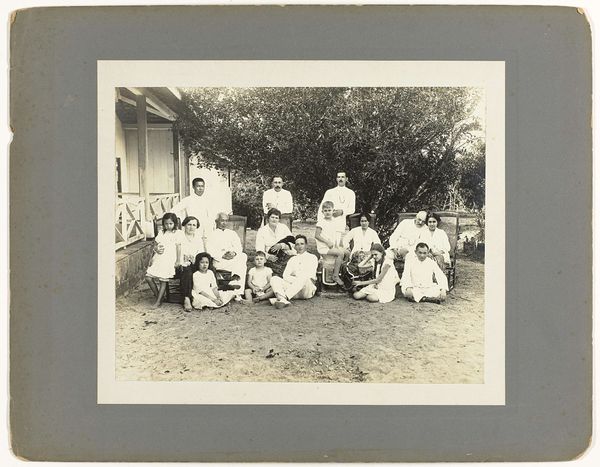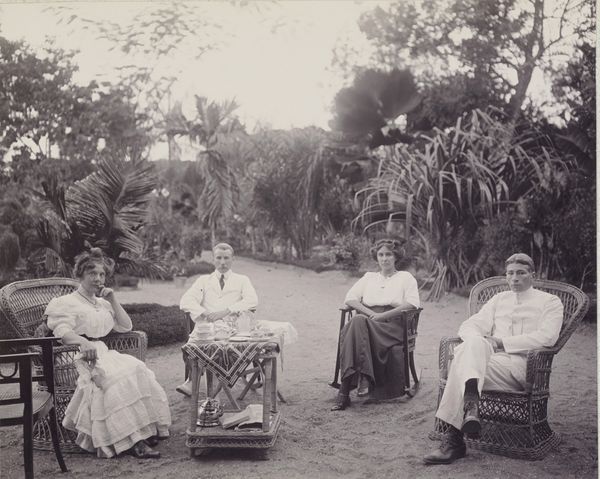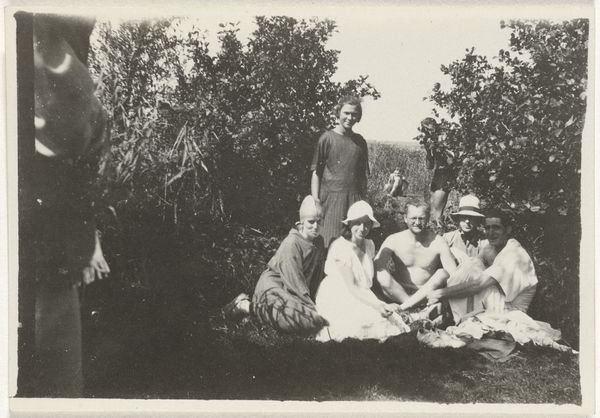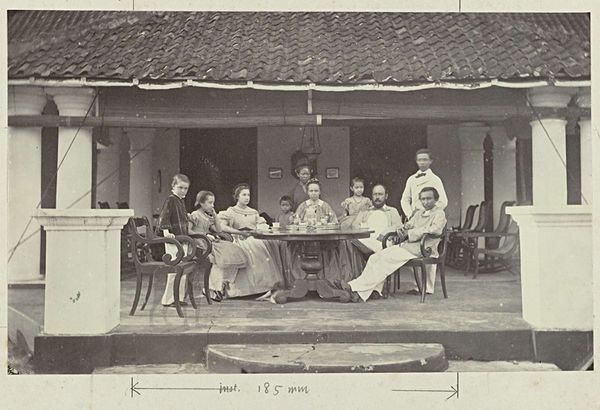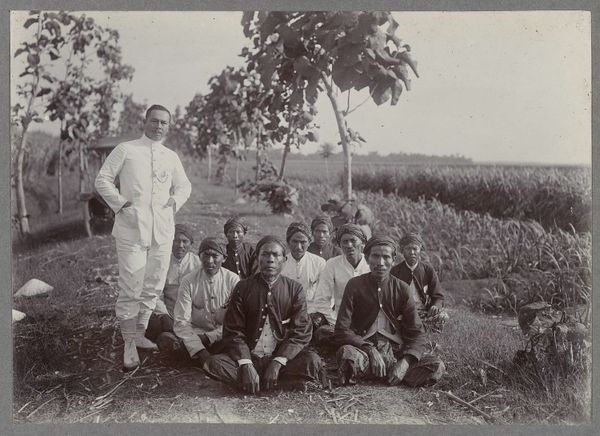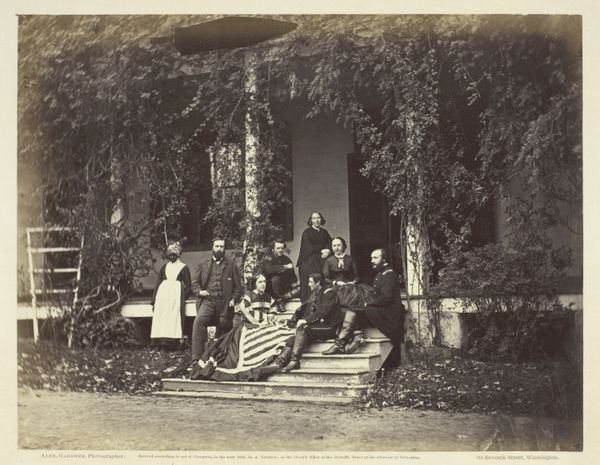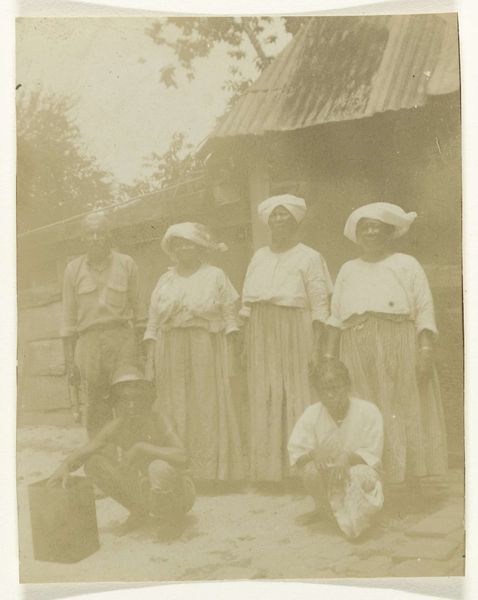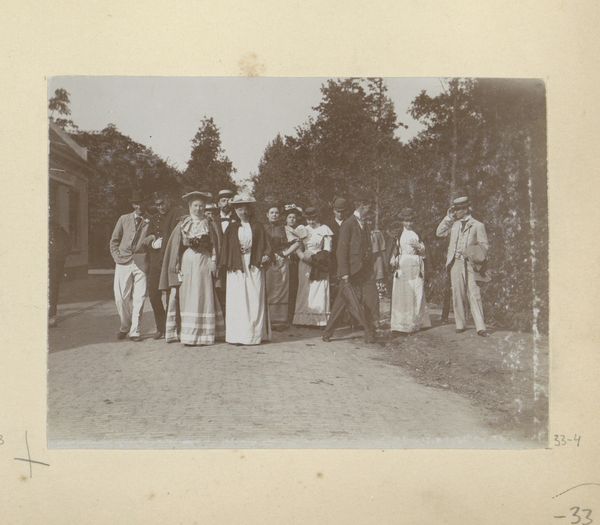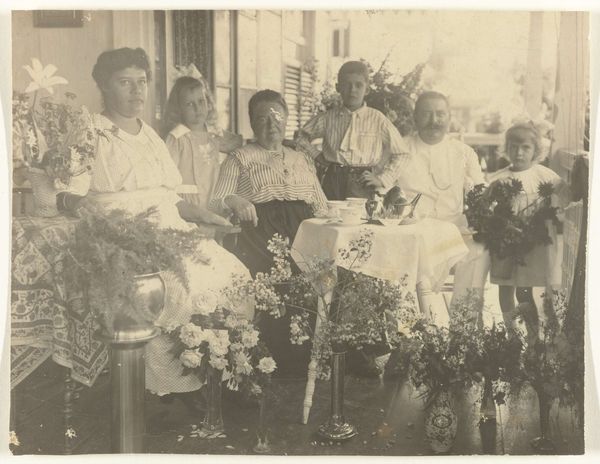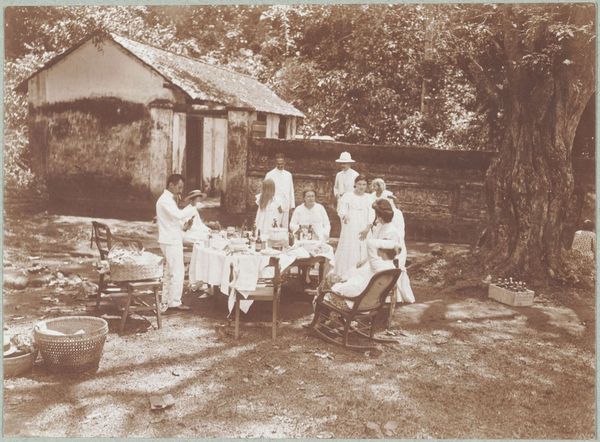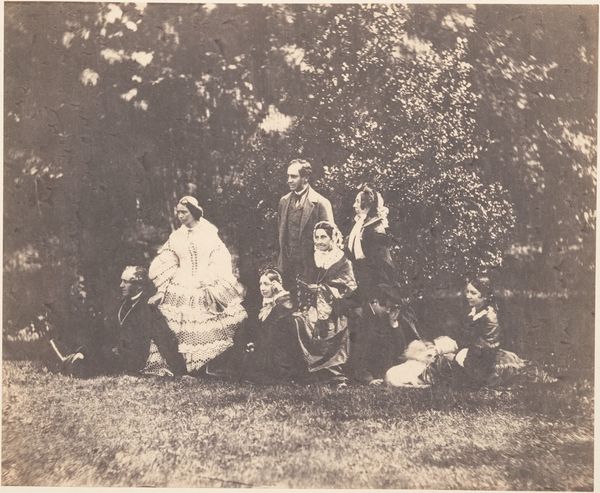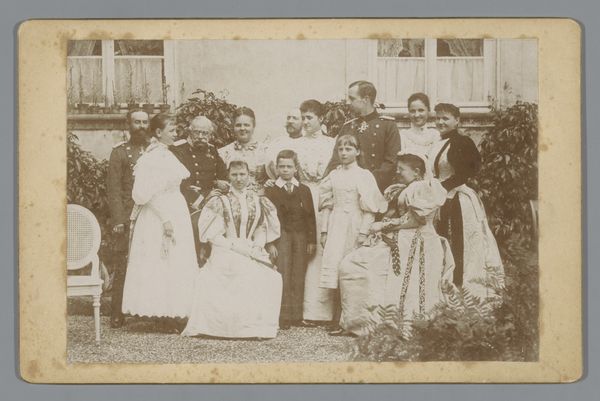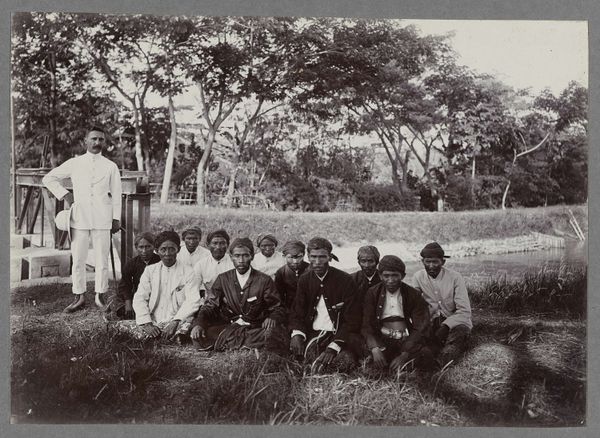
photography
#
portrait
#
landscape
#
photography
#
group-portraits
#
genre-painting
Dimensions: height 83 mm, width 110 mm
Copyright: Rijks Museum: Open Domain
Curator: This photograph captures a group portrait identified as "Familie Gonggrijp met vrienden op plantage Clevia," likely taken between 1916 and 1919. The photographic genre scene gives us a peek into life on what seems to be plantation Clevia. Editor: My initial impression is of a serene, posed tableau. There's a quiet dignity in how everyone's arranged, almost theatrical in its stillness against that somewhat wild backdrop. It has such a melancholy charm, like a half-remembered dream. Curator: Indeed, that controlled stillness contrasts sharply with the backdrop of lush greenery, the supposed 'plantation'. It prompts you to consider the societal implications; group portraits such as these served a distinct purpose, portraying wealth, lineage, and social standing. How do you think such photographs played into the colonial narrative? Editor: That's astute, I see that so clearly now! The deliberate staging normalizes that colonial vision of power. They appear calm, orderly, a picture of dominance amidst the seeming abundance of the land. Is this image about control rather than family bonds? Curator: I wouldn't negate family bonds completely, there’s still an element of wanting to remember one's closest and dearest; I tend to wonder about what isn't seen and understood: the native workers or indentured servants who remain largely absent in most of these period depictions. They're implied by their absence. Editor: Such images become artifacts, not only personal memories, but potent symbols shaping the broader discourse. To that degree it really gets you thinking how photography participated actively in shaping perspectives, or concealing inconvenient truths. Is that how images bolster or undermine our historical memory? Curator: It’s certainly food for thought and is why such genre scenes and group portraits provide insight on several distinct and connected social and cultural spheres. Images such as this urge us to reflect. Editor: Yes, looking at this photo allows me to reflect how such seemingly placid images really work so well to subtly maintain systems and societal stories.
Comments
No comments
Be the first to comment and join the conversation on the ultimate creative platform.
